Sharing is caring!
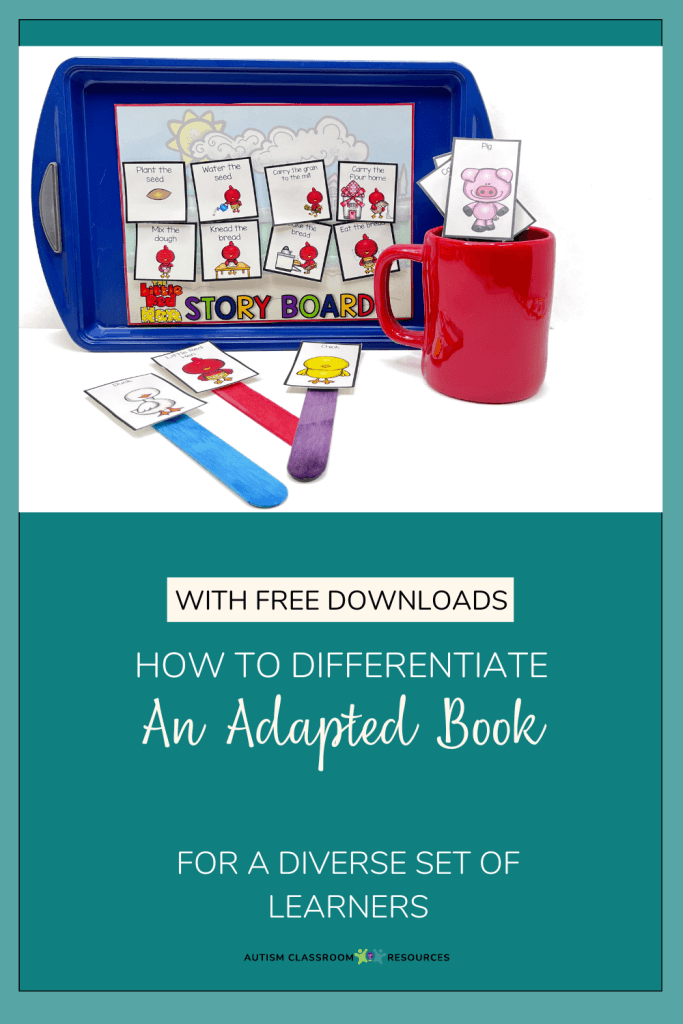
An adapted book can make such a great addition to our teaching tools for so many skills. But it can be difficult figuring out how to use them with a group where some students may be nonverbal, others might be working on vocabulary, another might be learning when to talk in a group etc.
In other words, the great thing about an adapted book is that it is adapted to learner needs. And the tough thing about an adapted book is trying to make sure it can fit ALL the students needs.
So today I am talking about 5 easy strategies for including diverse learners and I’ll also talk about how to differentiate within
What is an Adapted Book?
Some people refer to these as interactive books. In some situations they are the same. To me, for this post especially, I’m going to focus on books that have components already adapted to different types of learners and that promote interaction with the students. So they are adapted books and interactive books.
You can make an adapted book out of almost any book by modifying the text, making copies of the pictures, adding symbols, rewriting the text in an easier reading level or a thousand other ways. The key to making it interactive is how you setup and use those components. Most of the examples I’ll share here will be both and will be original stories setup to promote vocabulary, interaction, literacy, and communication.
- To see some examples of how an adapted book can be used for vocabulary development, check this post.
- For examples of how adapted books can foster literacy, check out this post.
1. Use AAC for Identified Vocabulary
One way that I address using adapted books with groups of students is to modify the way the students interact with the book. For students who don’t use verbal communication, you can put the vocabulary targeted in the book on their dedicated AAC device or on a simple 1-message switch. Then you can target that type of communication in a few ways.
You can have them tell you what something is using their device when you point to a picture. You can target all different types of vocabulary from nouns and verbs to adjectives with books.
Similarly, the vocabulary pictures in the book can be used to make a picture board that the student can use to identify vocabulary items like with the seasons interactive book below.
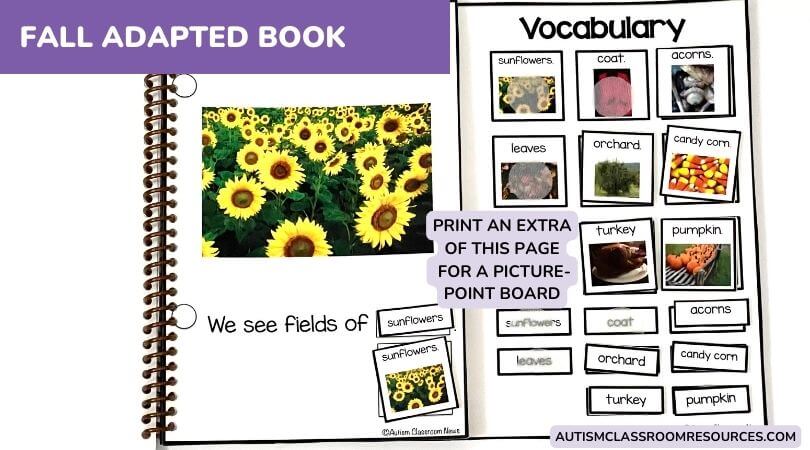
2. Use AAC Device to Finish a Repeated Phrase When You Pause
Or have them use their device or a switch to finish a repetitive phrase in the book. Essentially you want to set it up so that students are waiting for you to pause in reading the text and then they are filling in the rest of the text. This way they need to attend and know when to communicate during the interaction.
In the example below from my Winter Circle-Time Add-on Set, students could use their device or a single switch to say, “They were on a winter walk.” This phrase is repeated on each page for just that purpose.
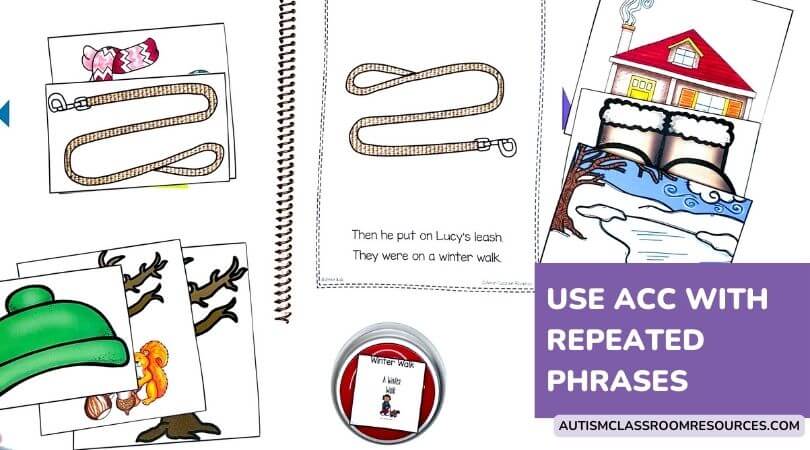
4. Using Pictures from the Adapted Book
If you have students who can’t attend without support in group activities, one strategy is to give them something to hold in their hands. I like to give them something that is related to the activity. So for reading, I would give them a picture to match to a specific page when you read it.
So in the book below, students would have a picture of a boy shoveling snow. And when the teacher reads that page, the student would add the picture to the book to match it.
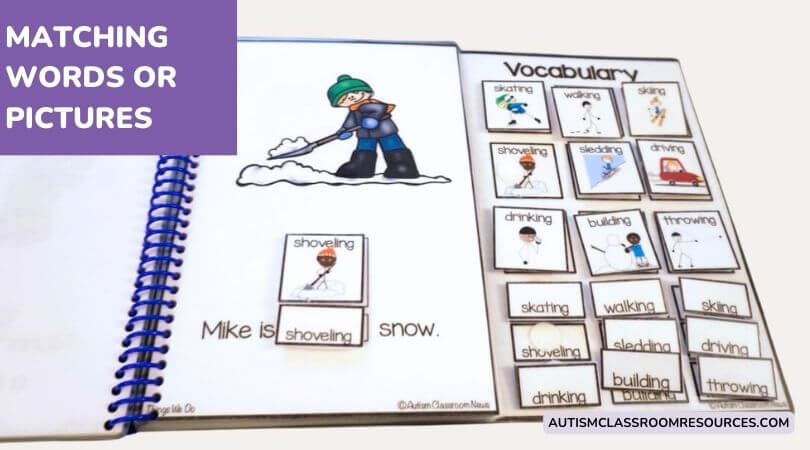
5. Give Students Their Own Copy of the Book
If holding a piece of the book isn’t enough, some students may benefit from having their own copy of the book. If they are readers, you could give them just the text on one page and have them follow along, checking off the text that has been read.
If you have a larger book you use for the group, you could make a smaller one for the student or students. If the adapted book has interactive pieces, they would be interacting with it while the rest of the class is doing their thing in the group.
6. Use Response Cards
Another great way to get students engaged with any activity, including a story or reading time, is to use response cards. For an adapted book, take the pictures the students will match and make multiple copies. You can put them on popsicle sticks like the picture below, or just use them as pictures on a velcro board that they can see.
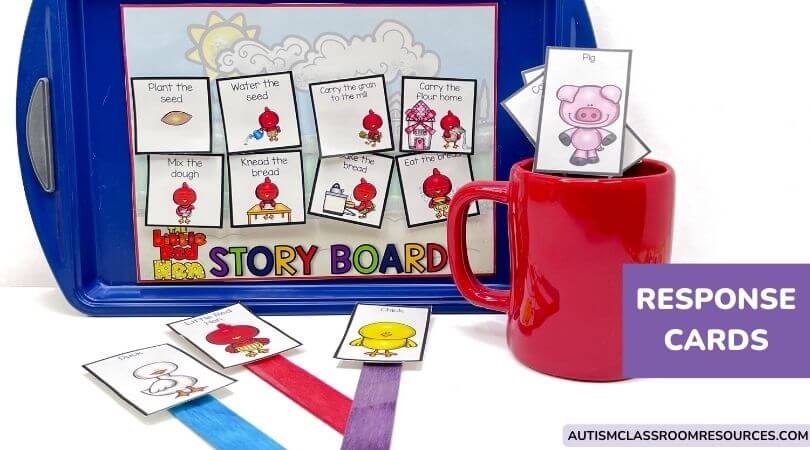
When you get to that character’s page (as in the picture for The Little Red Hen below), each student would use the pictures to answer questions (e.g., who told the Little Red Hen they wouldn’t help this time?) or identify characters (e.g., “Who is that?”) depending on the goals for the individual students. This way everyone answers every time and there is no waiting for a turn.
Differentiating 1 Adapted Book with Multiple Needs Learners
Many times we use an adapted book as part of circle time or morning meeting time. However, when we are using it with a group of students, it might be hard to keep all the students engaged with 1 story. But the great thing about an adapted book is that you can adapt it differently for different learners.
So for instance,
- One student might be repeating the common phrase in the book with their communication device.
- Another student can be matching the right picture to the pages of the book.
- Another could be matching the right word to a sentence in the book to match the picture.
- Finally one could be reading the book (or the page) to the class.
Then you could switch it out to 4 other students in the group for the next page.
Using response cards with some or all of the students is a good way to keep them all engaged as well.
The key is to make sure that your adapted book has lots of options you can integrate into your specific group matching their unique goals. If you are looking for more ideas of how to engage all your students in group activities, check out this episode of the podcast for ideas about how to engage learners in morning meeting or circle time.
Looking for More Adapted Books for Any Age?
This bundle has 20 books with 5 books for each season. One book in each set is with photos and one has verbs instead of nouns. Several within the set ask questions for students to answer with photo cards. They are written at approximately a 2nd grade level but are appropriate for all ages. Grab them here.
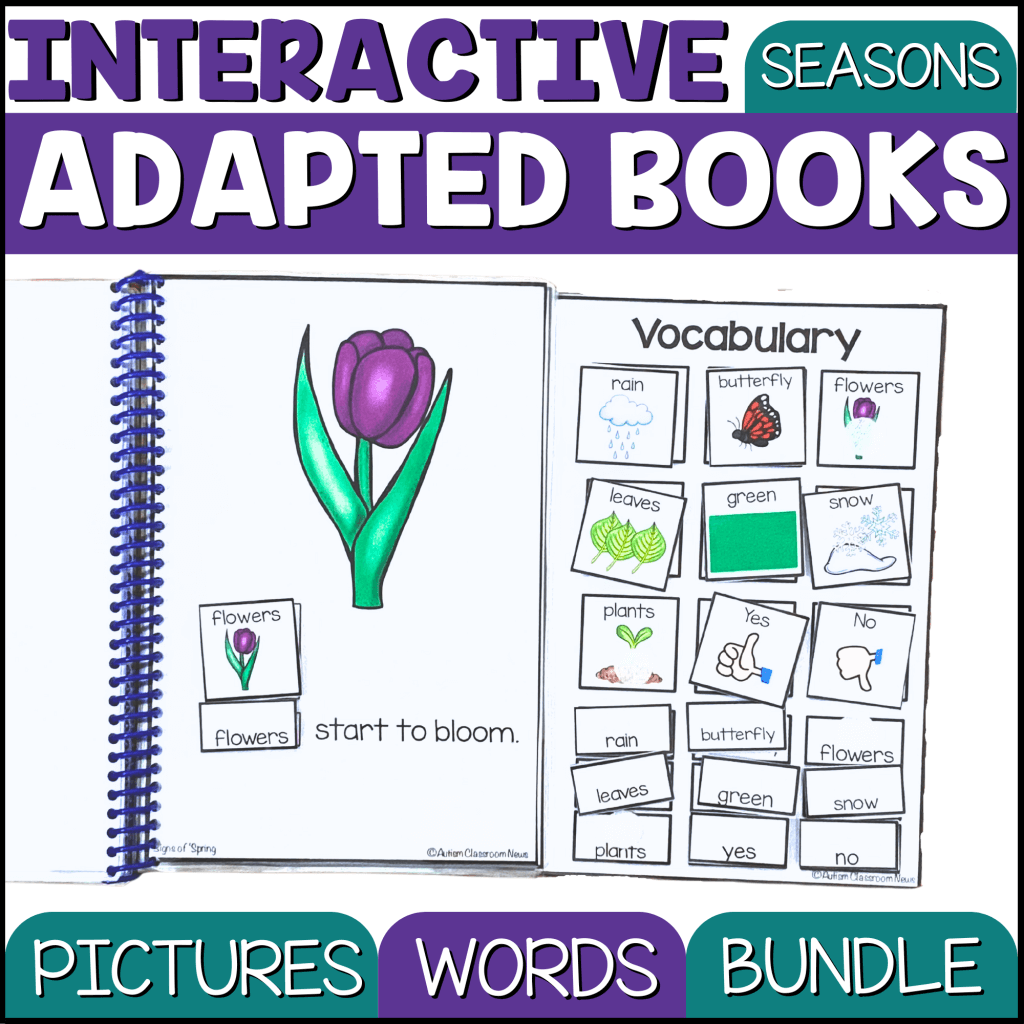
Free Adapted Books
Want to try out some of the strategies above? You can grab a variety of interactive books (some are holiday related) in the Free Resource Library. Join here or sign in here to grab them FREE!



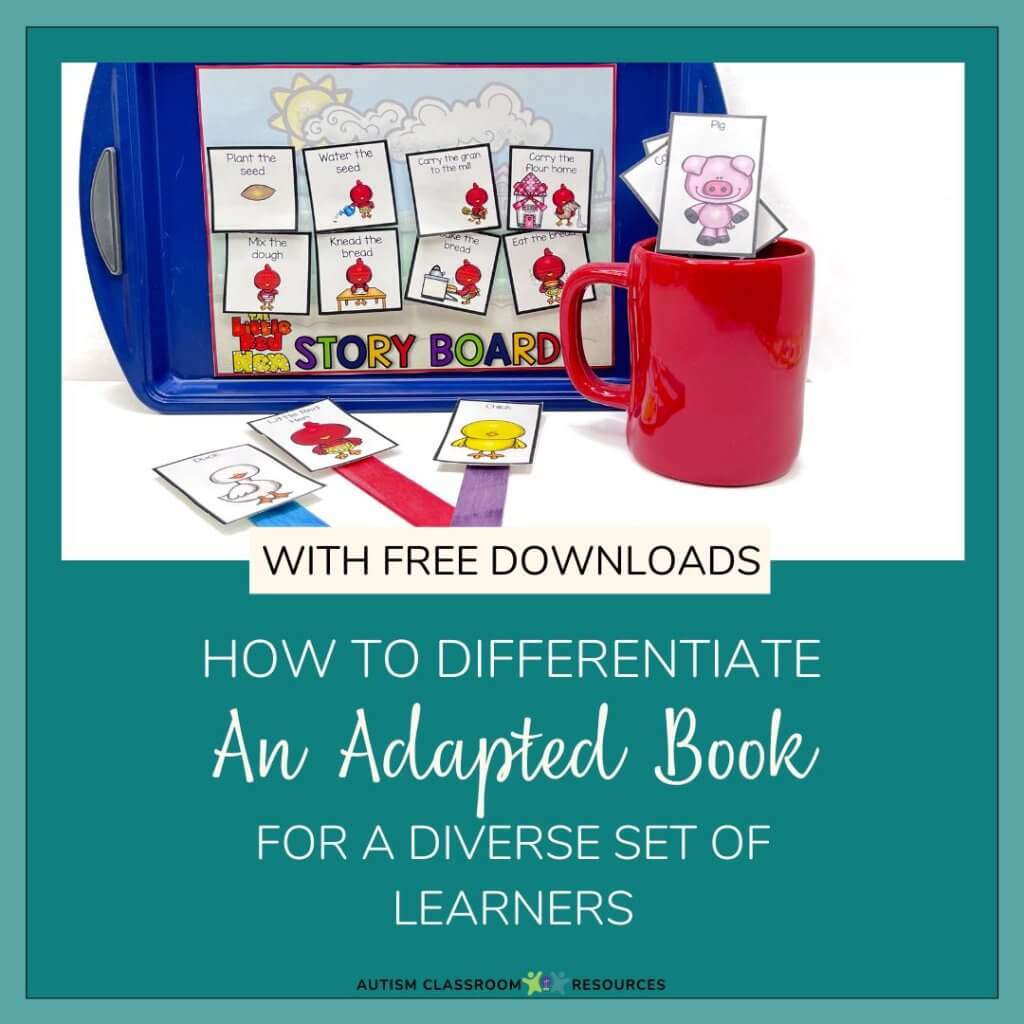
![Summer resources to help survive the end of the year in special education [picture-interactive books with summer themes]](https://autismclassroomresources.com/wp-content/uploads/2018/05/SUMMER-RESOURCES-ROUNDUP-FEATURE-8528-768x768.jpg)



